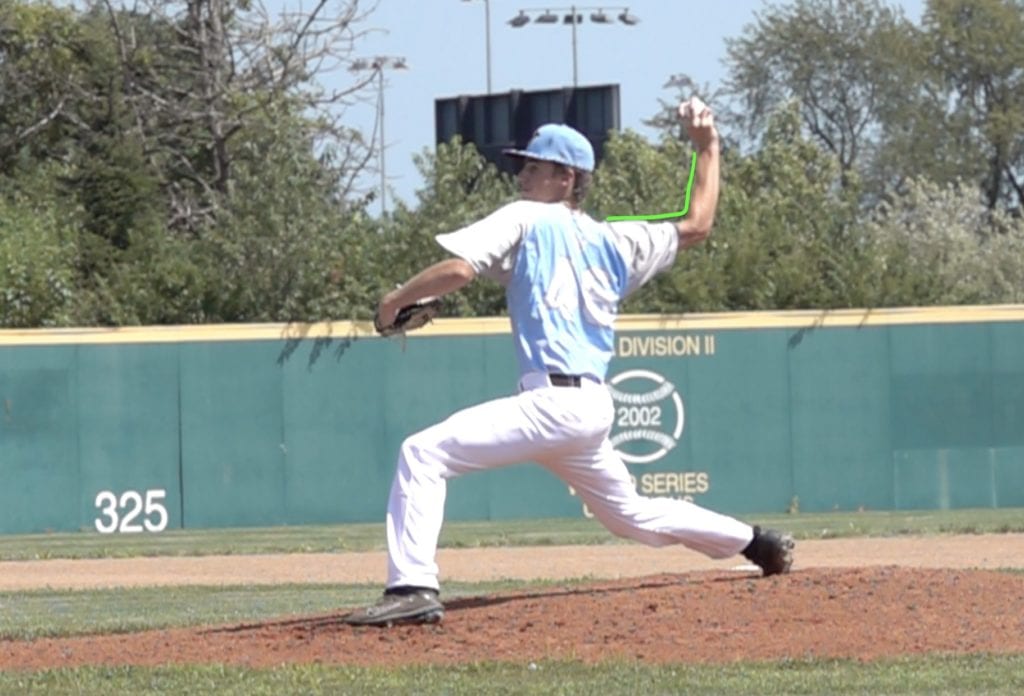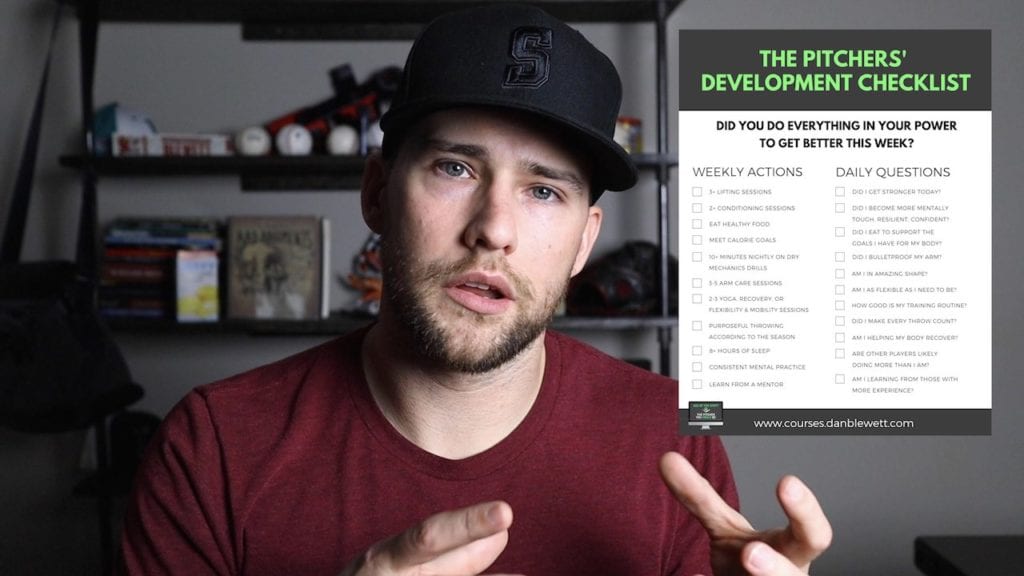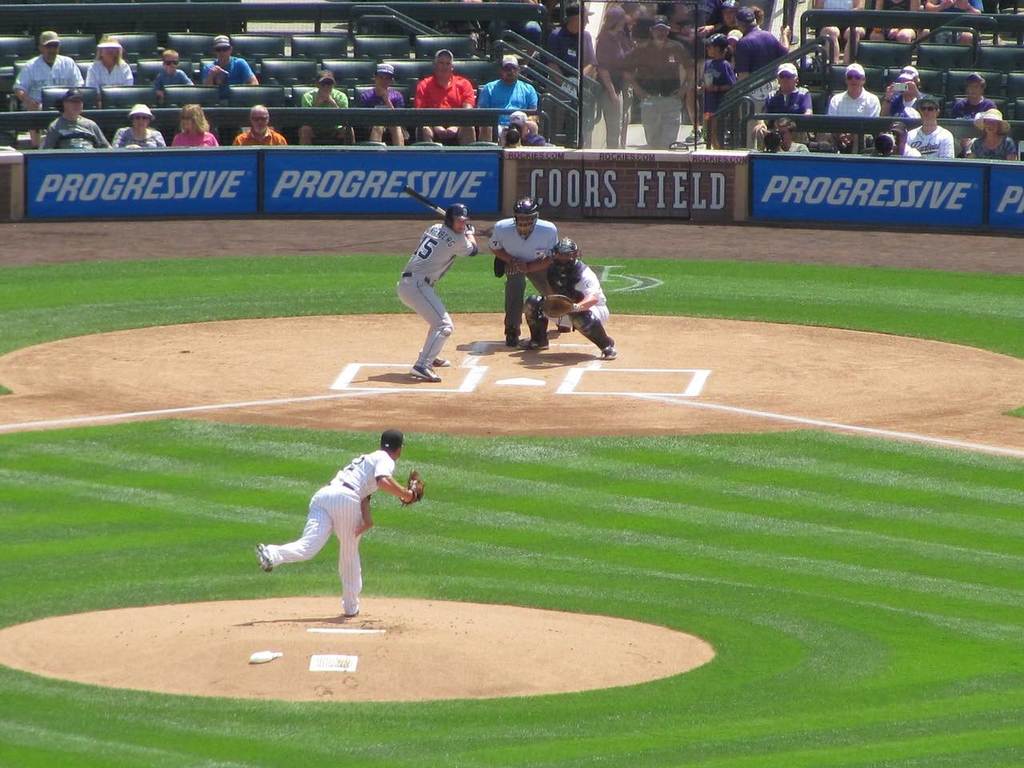*This article may contain product links which pay me a small commission if you make a purchase. Learn more.
It’s tough finding the right pitching drills that will help the young players on your baseball team. In this article, I’ll show you a handful of techniques that will be perfect for any young player. These drills are simple, yet effective, in creating better throwing and pitching mechanics. Any coach can implement them right away in their practice plans.
Learn More About Youth Pitching Mechanics
Get started by watching my video about youth pitching mechanics – it’s simple and clear.
And if you’re a coach looking to provide your players with the best coaching and instruction, be sure to check out my newest book, Clean Your Cleats. It’s written for aspiring players, to help them along.

Grab your copy wherever books are sold online.
PLUS: Advanced Video for Pitching Mechanics
Drills are important, but an understanding of pitching mechanics is HUGE if you want to develop into a great pitcher. The video below from my YouTube channel will take you through every step of the pitching motion and is explained simply and clearly for youth pitchers all the way up to advanced ones.
What are some of the best youth pitching drills? The rocker drill, heel-toe drill are two great ones that will help players improve their hip lead, mechanics are use of their front side. For pitchers who want to increase their velocity and command, these two drills will make a huge difference.
Good Pitching Drills Can Help Fix a Lot of Pitching Mechanics Issues
First, jump to any section in this article using the table of contents below:
As background information, let’s talk about a common problem that youth pitchers have: they tend to struggle with the following two mechanical items:
- They don’t use their front side well
- They don’t go “uphill” very well
Let’s take a greater look at these two problems in the YouTube video below before going into the drills that will fix them. It’s a short video so be sure to watch below.
The problems you’ll see in the video above are ones that are relatively easy to fix in practice IF you know the right medicine–i.e. drills–to give them.
It’s important to remember that repetition and good coach is critical to success here.
If you need a more thorough solution, be sure to grab a copy of my pitching book, which is a full solution for the young pitcher or coach.

It’s not enough to just have great drills – mental toughness, a sound pitching strategy, great command and off-speed stuff is critically important as well.
Video: A Discussion of Good vs Bad Drills
Both of these mechanical problems can cause a pitcher to have a lower arm slot than they otherwise would. They also lose a lot of velocity and command.
For youth players, good pitching drills done regularly help improve these two major aspects of mechanics. In the video below you’ll find why some drills are good for fixing these issues, while some are not.
Basically, with a good weight shift, good uphill shoulders as they stride, and good use of the front side, pitchers will have a more repeatable, slightly higher arm slot and better command and velocity.
So, many pitchers need drills that will address a low front side and a poor weight shift that causes them to leak their weight forward. We’ll address both of those below.
Read My Detailed Pitching Mechanics Article Below If You Want to Learn More about Proper Technique.
My article on every step in the pitching delivery is very thorough. It has over 60 photos demonstrating the entire pitching motion and was made as a reference for coaches. Since you’re here looking to help your youth pitchers succeed, take the time to bookmark the article below and go through it – it’s very thorough and meant to be something you’ll return to over and over.

The “Downhill Shoulders” Mechanics Flaw and How Drills Can Fix It
In the following video, I address some of the key issues that cause many youth pitchers in baseball to “sling” the ball and get around it. It’s definitely worth watching if you’re a coach or parent and you have kids on your team who struggle with a dropping arm slot.
Youth pitching drills can correct many of these issues, but it’s important to know where the problems arise.
After watching the above video, you probably have a better idea of the importance of the front side and “uphill shoulders” mentality. So, let’s go onto two great youth pitching drills that can drive home these points.
Youth Pitching Drill #1: Front-Side Drills
The pitching drills in this video teach how the front side (glove arm) should work. Especially with young players, the goal should be to keep it simple, and this drill fits that bill.
The glove arm is a really important part of the pitching motion and helps a pitcher leverage his core and hips to get on top of the ball.
The glove arm helps the body rotate faster, while also helping to move the chest toward the target. Using the glove arm effectively is really important and something we want all youth pitchers to get good at–it will serve them well the rest of their careers.
Youth Pitching Drill #2: Rocker Drill
This is a foundational pitching drill that any pitcher should use. It’s a drill I did my entire career, and most pitchers I teach it to use it every single day. It’s definitely a mainstay on any list of youth pitching drills.
The rocker is also huge on helping players get the most from their front side, and using it to drive their torso forward to the plate, which increases velocity and command.
The rocker drill works the front side, teaches good weight shift and an “uphill shoulders” mentality that is crucial for young pitchers to develop.
Youth Pitching Drill #3: The Wall-Hip Drill
This is one of my favorite pitching mechanics drills that will help most developing pitchers throw harder and more accurately. This is because too many young pitchers fail to shift their weight properly down the mound, and this drill helps teach the “hip lead” action that keeps the weight back properly.
BONUS Video: Pitching Velocity Myths
I created an in-depth video on factors that produce pitching velocity, and common myths around them. It’s definitely worth your time to check out.
Youth pitchers need lots of structure and instruction, but they also need to be doing the right things in the right doses. Drills are great, but there is more to it than just drills and it’s important to know where pitching mechanics, drills and velocity intersect.
Be sure to subscribe to my YouTube channel for more great pitching videos on velocity, mechanics, mindset and much more.
The Best Way to Perform the Wind Up
Pitching drills are important, but the basics are absolutely critical. In this video below, I share the simple way to do the windup. If you’re here looking for pitching advice, be sure to watch the video below and peruse my YouTube channel, which has tons of helping advice.
Pitchers: Are You Doing The Right Things?
If you’re looking for more in-depth info to help the pitcher in your life, download my pitchers’ checklist and join my email list (you’ll get both when you sign up). I send out new helpful free content each week.

Download my free PDF checklist, the Pitcher’s Development Checklist. You’ll also get a companion video that walks you through it, explaining all of the concepts that pitchers should be working on to be their best one day.
And, if you have a question, be sure to reach out and send me an email.
More Pitching Resources
Want more help with your pitchers? Here are a few links to other helpful pieces:
- The Complete Guide to Pitching Mechanics
- My In-depth Guide to Baseball Positions
- How to Throw a Changeup
- How to Throw a Curveball
- How to Throw a Sinker
- My YouTube Channel
- What is a Balk in Baseball? 13 Common ways to balk
These are great pitching resources, so be sure to check them out and share with a fellow parent or coach.
And, grab a copy of my pitching book below.

Dear Baseball Gods Podcast – Free Coaching Advice
Be sure to check out my baseball coaching podcast, called Dear Baseball Gods
Youth Pitching Drills FAQ
Have a question? Leave one below and check out common questions and answers.
How do I teach my 8 year old how to pitch?
Follow this step-by-step method:
1. Help him become a good thrower first – play a lot of catch and don’t worry so much about accuracy when they’re young – focus on helping him throw farther and farther distances and feel comfortable throwing without thinking.
2. Make it a game and make it fun. Pitching should be a joyful activity, so target practice type activities are great. Many great pitchers grew up throwing a tennis ball off a wall at a target they drew in chalk, or a specific brick, or by throwing rocks. These skills are actually quite important.
3. Teach them to move their feet – learning good, fast feet is very important. Teach him to crow hop, shuffle, and then teach the wind up.
4. Teach the wind up – the wind up isn’t hard, but it’s the foundation for good pitching mechanics. YouTube has many tutorials on this.
What are good youth pitching drills?
Don’t focus too much on pitching drills – focus more of of your time on teaching good footwork that will be applicable all over the field. A “crow hop” is a great skill to learn, and teach a young pitcher how to shuffle and throw farther distances. This helps his body automatically learn what is effective and what is not in the task of throwing a ball.
After that, teach the wind up, stretch position, and the Rocker Drill and Swing Shuffle drills are great youth pitching drills that promote good mechanics. Both are found on my YouTube channel and this article.
When should a youth pitcher learn the stretch position?
At 11 or 12 years old, or basically one year before he is going to play in a league where runners can lead off and steal. It’s fine to use the stretch position instead of the wind up, though I prefer to teach youth pitchers both.
What helps young pitchers throw harder?
First, good mechanics – these take time and care to develop, but they’re the best thing to focus on for the long-term. Second, a quality arm care and strength training regimen. Third, consistent throwing – you have to throw to throw harder. Fourth, a quality throwing routine with consistent drills, volumes and an atmosphere of focus and dedication to the craft of pitching.
